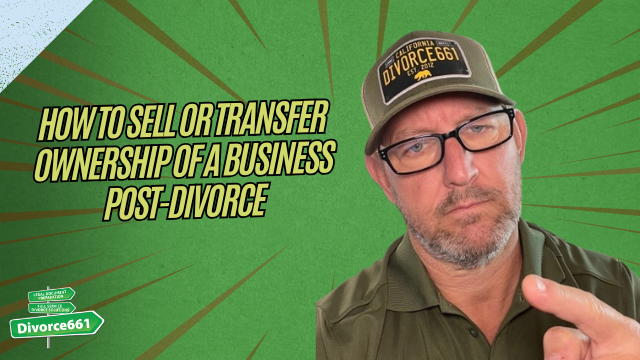What Happens to Shared Business Partnerships After Divorce?
Divorce is never easy, but when you and your spouse co-own a business, the stakes get even higher. This added complexity can feel overwhelming, especially when your financial future and livelihood are intertwined. Understanding what happens to a shared business after divorce—and knowing your options—can help you protect both your interests and your peace of mind.
In this article, we’ll explore how California treats businesses during divorce, outline the common ways to handle shared ownership, and share practical insights on protecting yourself legally and financially throughout the process.
How Does California Treat Shared Businesses in Divorce?
California is a community property state, which means any business started or operated during the marriage is typically considered community property. Even if only one spouse was actively involved in running the business, both spouses usually have a legal claim to it.
This legal framework ensures that the business is treated as a shared asset, which must be divided fairly during the divorce. However, the process of dividing a business can be complicated and requires careful planning and negotiation.
Your Options When Dividing a Shared Business
When you and your spouse co-own a business, there are generally three main paths to resolve ownership during divorce:
- Buyout: One spouse buys out the other’s interest in the business.
- Joint Ownership: Both spouses agree to continue running the business together post-divorce.
- Sale: The business is sold, and the proceeds are divided between the spouses.
Each option involves unique legal and financial considerations. For example, a buyout usually requires a formal business valuation to determine the fair market value of the business interest. If both spouses remain co-owners after the divorce, it’s critical to have a detailed, written agreement outlining each party’s roles, responsibilities, and exit strategies to avoid future disputes.
Why Business Valuation Is Essential
Determining the value of a shared business is a foundational step in any divorce involving business assets. A professional valuation ensures that buyouts and settlements are fair and equitable, protecting both parties from undervaluing or overvaluing the business.
Real Client Story: A 12-Month Buyout Agreement
One real-life example involved a couple who ran a successful online business together. During their divorce, they agreed that one spouse would take full ownership of the business and buy out the other’s interest over twelve months.
To make this arrangement legally binding and enforceable, the terms were documented in their divorce judgment. This approach not only created clarity but also safeguarded both parties from future conflicts related to ownership or payments.
Protecting Yourself Legally and Financially
To avoid costly mistakes and protect your financial future, it’s vital to have clear judgment language that reflects your business division agreement. Whether you’re negotiating a buyout, continuing joint ownership, or selling the business, solid legal documentation is the backbone of a smooth transition.
Agreements should explicitly detail:
- Ownership percentages
- Payment terms and schedules for buyouts
- Roles and responsibilities if continuing joint ownership
- Procedures if one party wants to exit the business in the future
- Dispute resolution mechanisms
Why Work With Experts Who Understand Business and Divorce?
Divorcing couples with shared business interests face complex financial and legal challenges that go beyond standard divorce paperwork. Working with specialists who understand both divorce law and business valuation can make a significant difference.
Expert guidance helps you:
- Navigate business valuation and buyout structuring
- Ensure your divorce judgment language is airtight and enforceable
- Protect your business interests and personal financial future
- Maintain peace of mind during a stressful transition
Final Thoughts
Dividing a shared business after divorce is challenging but manageable with the right knowledge and support. Whether you pursue a buyout, continue as co-owners, or sell the business, understanding California’s legal framework and having clear agreements is critical.
If you co-own a business and are facing divorce, don’t leave your financial future to chance. Taking proactive steps—such as professional valuation and well-drafted legal agreements—can protect your interests and help you move forward confidently.
Remember, the goal is not just to divide assets but to secure a future where you can thrive post-divorce.
Are you currently navigating a divorce involving a shared business? What approach are you considering? Feel free to share your thoughts or questions below.









